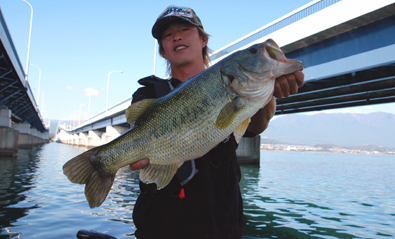
This has been a rather melancholy few weeks for me. As some of you know my older brother underwent emergency surgery about ten days ago, a scary and dangerous scenario for someone I've always seen (as most younger siblings do to their older brothers) as indestructable. Then the father of a close friend passed away, out of the blue. Finally, as if this wasn't enough ennui for one short period, my next door neighbor
Ernie Todd died.
Eight years ago I moved in next door to Mr. Todd, as we always called him. At the time he was 82 and incredibly spry for his age, and was extremely active up until the last few months of his life. I don't know if Mr. Todd was an angler--the subject never came up--but his passing at the age of 90 got me thinking about the passage of time.
Ernie Todd was born in 1919. It was a year of tremendous change. The Paris Peace Conference formally ended the carnage of the First World War; the history professor in me can't avoid the opportunity to instruct that the Treaty of Versailles was just one of a number of separate treaties, each involving a former Central Power (even Bulgaria got its own Treaty of Neuilly).
It was also a critical period for sportfishing history. With the decommissioning of over a million American men from the American Expeditionary Force, a rejuvenated sportfishing industry arose to meet their growing demands. Companies such as Winchester and Thos. E. Wilson entered the tackle industry with a bang, while older firms like Abbey & Imbrie and VL&A grew by leaps and bounds. It was truly a Golden Era, a veritable "jazz wiggler" age as Bill Sonnett pointed out in last weekend's "Deconstructing Old Ads."

Like millions of American boys and girls, Ernie Todd came of age in this new gilded era. When the Crash came in 1929, he would have been too young to understand its import at first, but as dire reports turned into lost wages, jobs, and homes, he would have learned a hard life lesson. As the Depression deepened, hope might have seemed a commodity in short supply, but even in the darkest times there are glimmers of light. The dawn is never far away.
Yet in such crushing economic times--far worse than anything we are experiencing in the 2000s--fishing did not just persevere, it exploded. Boys took to the rivers and streams in unprecedented numbers, while the Civilian Conservation Corp trained hundreds of thousands of men in the art of woodcraft. The Big Five firms of Creek Chub, Pflueger, Shakespeare, South Bend, and Heddon all prospered.
Ernie Todd would have become an adult in the late 1930s, just in time to see the storm clouds gathering over Europe and Asia. For the second time in two decades war broke out and American men and women responded to their nation's call. The fishing tackle industry virtually shut down; the total war effort required to defeat the Axis subordinated most American industries to the federal government. Forty-four months later the war ended, but the world was never the same.
 1942 photo of William Shakespeare, Jr. holding what looks like a reel spool. In actuality is is a precision part for a bomber. In WWI the same Shakespeare factory made mortar fuses.
1942 photo of William Shakespeare, Jr. holding what looks like a reel spool. In actuality is is a precision part for a bomber. In WWI the same Shakespeare factory made mortar fuses.Coming home victorious, Mr. Todd and soldiers like him would have found an American transformed. In the immediate post-war years, Fishing reflected this change. Bamboo to Fiberglass. Casting to Spinning. Silk to Nylon. Wood to plastic. In a period of ten years, the new face of fishing was virtually unrecognizable. By the 1960s, older companies failed at an alarming rate while new ones grew in their place. One by one the Big five were replaced by relative newcomers such as Abu/Garcia, Zebco, Rapala, and Daiwa at the top of the tackle chain.

The 1960s and 1970s quickened the pace of change. By 1980, of the original Big Five firms only Shakespeare survived to live into this new era. Imported tackle began to dominate the American fishing scene; now, if Mr. Todd bought his grandchildren a new fishing outfit, it was as likely to have been made in China or Japan as in America. The 1990s only exacerbated this situation.
And what of the new century? Mr. Todd entered it already an octogenarian, a witness to and participant in the cavalcade of American history. Fishing had certainly changed across the breadth of his life, and if he didn't notice it, millions of others did. But despite the numerous alterations, the rhythm of fishing remains fixed. On clear summer days, grandparents still teach their grandchildren how to fish, just as they were instructed when they were young.
I guess the point of all of this is to remind you that every voice that is silenced that lived through these times is irreplaceable. But not everything is dire news. While doing research for my forthcoming volume on fishing rod makers, I tracked down the descendant of a professional Texas rodmaker (you read that right--split cane from the Lone Star state!) and wrote them a note. Guess what? Not only did I get a response, but the rodmaker himself was still alive--and alert--at the tender age of 99. Will wonders never cease?
I call the Tuesday offerings "Voices from the Past" because I believe we can hear the echoes of anglers in the poems, essays, articles, and books of yore.
Today, I have no trouble hearing such distant voices. They are everywhere, and now Mr. Todd has joined the chorus.
-- Dr. Todd








